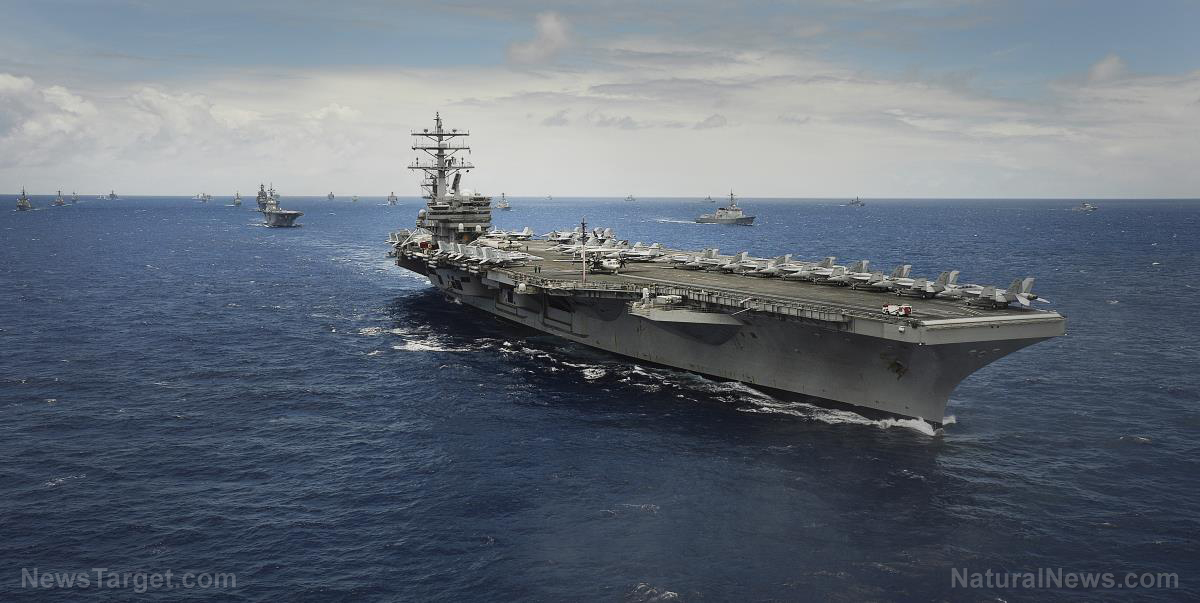
The USS Theodore Roosevelt has been stuck at port in Guam since late March, when the coronavirus first wreaked havoc upon the ship. Since then, over 4,000 of the 4,800 crew members have had to go ashore for quarantine or isolation. Since the outbreak began, at least 1,156 sailors have tested positive for COVID-19, including one death, Aviation Ordnanceman Chief Petty Officer Charles Robert Thacker, Jr., who died in an intensive care unit at a Navy hospital in Guam on April 13.
Coronavirus swept through the USS Theodore Roosevelt
“These five sailors developed influenza-like illness symptoms and did the right thing reporting to medical for evaluation,” said the Navy in a statement released on May 15. According to the Navy, the five re-infected sailors self-monitored and adhered to proper social distancing precautionary measures. Once they tested positive again, they were immediately evacuated from the ship and put under isolation, including 18 other sailors who were also in contact with them.
Jonathan Hoffman, a spokesman for the Pentagon, said that the outbreak on the USS Theodore Roosevelt has been “a learning process.”
“This is a very stubborn, infectious disease,” Hoffman told reporters during a press briefing. He further went on to praise the Navy's quick action, which most likely helped prevent the whole crew of the aircraft carrier from being exposed for a second time.
An official familiar with the USS Theodore Roosevelt's situation said that the ship's commanders aren't entirely sure why the five sailors tested positive twice. However, the official did suggest that it may be related to questions about the accuracy of COVID-19 testing kits.
The sailors are tested using a nasal swab. In some cases, the coronavirus cannot be detected through this test. Health officials aren't certain whether the five sailors did relapse or if they tested negative without really being fully clear of the virus.
In response to the possibility of a second outbreak, the ship's commanders have intensified screening programs. Anybody who exhibits any flu-like symptoms will immediately be tested, evacuated and put under isolation.
As of May 14, over 2,900 sailors have re-boarded the ship, and around 25 percent of the crew that tested positive for COVID-19 have recovered. (Related: While U.S. deals with Wuhan virus pandemic, China tries to take advantage of distraction by expanding in South China Sea.)
USS Theodore Roosevelt resume operation after 55 days
On May 20, after 55 days of being stuck at a port in Naval Base Guam, USS Theodore Roosevelt finally left harbor with more than half of its over 4,800 crew members. Navy officials told USNI News that the ship's first deployment will most likely be brief and consist of the crew performing basic drills, which will certify whether the sailors can once again handle work on the aircraft carrier after an extended period of time away from the sea.
The process of returning the USS Theodore Roosevelt's sailors back to the ship began at the end of April. Sailors who were deemed healthy spent at least 14 days in isolation in Guam. Furthermore, they had to test negative for COVID-19 twice in a row. As of Sunday, over 2,900 sailors had returned to the carrier.
The length of the USS Theodore Roosevelt's stay at port means that the whole ship has to re-qualify to operate as a team before they can return to full active deployment.
The commanders of the ship, in a statement, said that the ship will be leaving sailors who are not required to participate in these evaluations. The men and women left behind will be tasked with supporting the recovery of the rest of the sailors who are still in isolation or quarantine.
During this time, the Navy has ordered the ship to enforce strict social distancing and very thorough cleaning protocols.
“It feels great to be back at sea,” said Rear Admiral Stuart Baker, commanding officer of Carrier Strike Group (CSG) 9, which the Theodore Roosevelt is a part of.
Despite the fact that five sailors tested positive upon returning to the ship, Surgeon General of the Navy, Rear Adm. Bruce Gillingham, remains confident that the carrier is “medically ready” to return to active duty.
It remains to be seen if the Navy would put the USS Theodore Roosevelt back in active duty after the new infections, but if the Navy's testing kits weren't properly audited, many false negatives may come back on ship and re-infect dozens more sailors.
Sources include:
Please contact us for more information.























